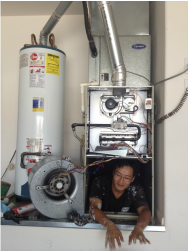Overview for BPI BA Certification
How do you bypass exam?
You need CEUs. If you have...
CEUs must be earned after you have taken both online and field exam, after you have a BPI BA certification. CEU’s are good for 3 years and are only good to bypass online exam
For BA only
How do you bypass the BPI field exam?
New Certifications are NOT eligible for bypassing the exam including
If your certification has already expired, you have to start from scratch and take full online and field exams. If you take attempt to take the exams for renewal but don’t pass, you are not eligible for bypass renewal process
What is considered necessary experience? There are 4 ways.
BPI has template letters for each of these
- It last for 3 years
- 6 months prior you can start the renewal process
- If you do start it early, you will still keep the same expiration date for the renewal
- Emails are sent out by BPI for renewal from portaladmin@bpi.org
- If you are renewing two certifications, you can align them so they will renew on the same date (whatever date is expiring first)
- 2 exams are taken (online and field)
- RVE (is field only)
How do you bypass exam?
You need CEUs. If you have...
- 0-9 CEUs no benefit
- 10-29 CEUsyou can take a shorten online exam
- >30 CEUs you can bypass online exam completely
CEUs must be earned after you have taken both online and field exam, after you have a BPI BA certification. CEU’s are good for 3 years and are only good to bypass online exam
For BA only
- Software modeling and work scope included in new exams
- 6 out of 30 CEUs need to be geared towards software modeling and work scope
- Need letter from employer that candidate has experience in modeling and work scope in lieu of CEUs from a class
How do you bypass the BPI field exam?
- Prior to March 13, 2014 there was no way
- You can bypass by proving work in field experience sent to BPI
- Fees sent directly to BPI
- You can submit documentation 30 days prior to expiration date
- Application process can be lengthy because of incomplete applications
New Certifications are NOT eligible for bypassing the exam including
- HEP designations
- Energy Auditor
- Quality Control Inspector
- Retrofit Installer Technician
- Crew Leader
If your certification has already expired, you have to start from scratch and take full online and field exams. If you take attempt to take the exams for renewal but don’t pass, you are not eligible for bypass renewal process
What is considered necessary experience? There are 4 ways.
- 3000 hrs of relevant experience in the field you are renewing. BA experience would be energy audits, work scopes, installation oversight, QA test in/ test out.
- Self employed with minimum of 3000 hrs. You will need 12 customer contact info for references and work descriptions, Employer ID, and the purchase order of blower door and model numbers, pictures of equipment and completed reports.
- Trainer with 200 hrs of training experience.
- Any candidate that is renewing for the 3rd time (9 consecutive years)
BPI has template letters for each of these

 RSS Feed
RSS Feed